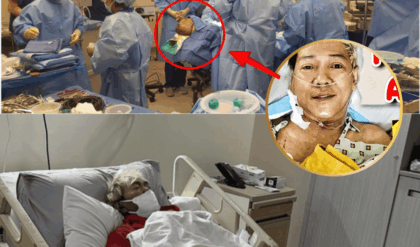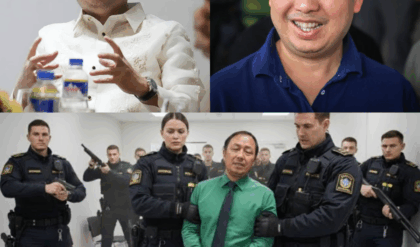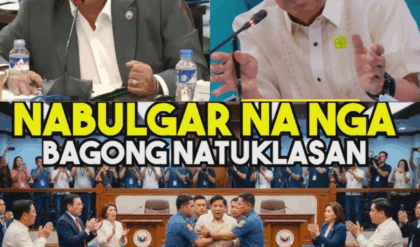🌏 Horror in Davao: A 7.6-Magnitude Earthquake Rocks the City — Hundreds of Patients and Health Workers Flee SPMC in Scenes of Chaos, Fear, and Uncertainty
By [Your Tabloid Desk]
Friday night was meant to be ordinary in Davao City. Families gathered for dinner. Workers prepared to head home. In the wards of the Southern Philippines Medical Center (SPMC), patients settled into uneasy sleep while nurses made their rounds.
Then, at approximately 10:37 p.m., the ground began to roar.
A massive 7.6-magnitude earthquake struck with terrifying force, shaking buildings to their foundations and sending waves of panic across the city.
Inside the largest hospital in Mindanao, chaos erupted. Patients, doctors, and nurses screamed, scrambled, and ran as the walls trembled and ceiling tiles crashed to the floor. Beds were wheeled out of the wards in a frenzy. Children cried. Health workers shouted directions over the din, desperately trying to lead patients to safety.
The scene was one of pure, unforgettable terror.

⚡ The Earthquake Strikes
Witnesses describe the quake as unlike anything they had ever experienced. The earth didn’t just shake; it convulsed. Windows rattled violently, lights flickered, and water pipes burst, sending streams gushing across corridors.
“I thought the building was going to collapse on top of us,” said Mariel, a young nurse who had just begun her night shift. “We were holding patients’ hands, trying to calm them, but we ourselves were crying.”
The quake lasted barely a minute. But to those inside, it felt like an eternity.
🏥 The Hospital Exodus
SPMC, with its sprawling complex and thousands of patients, became ground zero for the most haunting images of the disaster.
As soon as the tremors began, alarms blared. Health workers, many barefoot after abandoning their slippers, rushed to wheel patients out of wards. Elderly patients clutched oxygen tanks as they were pushed outside. Mothers shielded newborns against their chests. Doctors carried IV bags in one hand while supporting patients with the other.
By the time the shaking subsided, the hospital’s parking lot and streets outside had transformed into an open-air emergency ward. Hundreds of patients lay on mattresses, stretchers, and wheelchairs under the night sky, shivering in fear of aftershocks.
Photos and videos of the exodus spread online within minutes, sparking disbelief across the Philippines.
🌐 Social Media Frenzy
Twitter, Facebook, and TikTok lit up with real-time posts from Davao.
One viral video showed a line of patients in hospital gowns being wheeled down dark hallways as sirens wailed.
Another clip captured nurses screaming as ceiling debris fell just feet away from them.
A haunting photo showed a mother clutching her baby on a gurney outside the hospital, illuminated only by the glow of emergency lights.
Within hours, hashtags like #PrayForDavao and #SPMCevacuation trended nationwide.
Some netizens expressed horror:
“This is the scariest thing I’ve seen in years. Hospitals are supposed to be safe, not scenes of evacuation.”
Others offered prayers:
“Davao, stay strong. We are with you.”
💔 Panic and Fear
The terror wasn’t confined to the hospital. Across Davao City, people poured into the streets, abandoning their homes and apartments. Some clutched rosaries and whispered prayers, others sobbed into their phones while calling relatives.
For many, the quake resurrected memories of past disasters in the Philippines: deadly typhoons, volcanic eruptions, and earlier quakes that left communities in ruins.
What made this quake particularly terrifying was its timing. At night, in the darkness, panic spread faster, and rumors of tsunamis and building collapses heightened the fear.
🔍 The Science Behind the Quake
Seismologists later confirmed the quake registered 7.6 on the Richter scale, one of the most powerful tremors to hit the southern Philippines in decades. Its epicenter lay offshore, deep beneath the earth’s crust, but its force rippled inland with devastating effect.
Experts warned of possible aftershocks in the days to come. The fear of another strike kept thousands of Davao residents awake that night, huddled in evacuation centers or sleeping outdoors.
📰 Media Frenzy and Headlines

Local and international media outlets scrambled to cover the breaking disaster. Headlines screamed of chaos:
“Davao in Panic as Earthquake Forces Mass Evacuation”
“Hospital Patients Flee in Terror During 7.6 Quake”
“Is the Worst Yet to Come?”
Television networks aired live footage of patients lying outside SPMC, their IV drips dangling from makeshift poles as doctors continued treatment under the stars.
👩⚕️ Heroes in Scrubs
Amid the chaos, stories of courage emerged. Nurses who refused to abandon critical patients. Doctors who performed emergency procedures in parking lots. Orderlies who shielded children from falling debris.
“We didn’t think of ourselves,” said one exhausted doctor, her uniform streaked with dust. “We only thought of saving our patients.”
For many, these health workers became the unsung heroes of the night—symbols of resilience amid disaster.
🌏 International Reaction
The images quickly spread beyond the Philippines. Global news agencies picked up the story, and messages of solidarity poured in from around the world.
Filipino communities abroad launched fundraising drives overnight. Aid agencies began mobilizing, fearing the quake could trigger further humanitarian needs if aftershocks or infrastructure failures followed.
🗣️ Survivors’ Voices
Perhaps most powerful of all were the voices of those who lived through it.
“I thought it was the end,” whispered Carlos, a patient recovering from surgery who was wheeled outside in his hospital bed. “The building was shaking so hard. I kept praying to God.”
“I carried my grandmother down three flights of stairs,” recalled Joanna, a nursing student. “She couldn’t walk. My arms are still shaking.”
For many survivors, the quake was not just a natural disaster but a deeply personal trauma they would carry for years.
🔮 The Fear of What Comes Next
Even as dawn broke the next morning, fear lingered. Seismologists warned of powerful aftershocks, urging residents not to return indoors just yet.
Rumors swept the city—of more quakes coming, of cracks in dams, of unseen destruction waiting to reveal itself. Though many were unverified, in times of fear, rumors spread like wildfire.
The central question hung heavy in the air:
“Is this truly over, or is something worse yet to come?”
🏚️ Infrastructure Damage
Preliminary reports indicated damage to several structures in Davao and surrounding provinces. Cracks snaked across roads. Older buildings bore fractures. Power outages struck parts of the city.
Authorities rushed to inspect bridges, schools, and public facilities for safety, while thousands of evacuees remained in temporary shelters.
🎭 A Nation Holds Its Breath
As news of the quake spread across the Philippines, the nation held its breath. Disaster was nothing new to the archipelago, but each quake, each storm, brought new scars.
From Manila to Cebu, families with relatives in Davao spent sleepless nights glued to their phones, waiting for updates, praying for loved ones.
✨ Conclusion: Terror, Resilience, and Unanswered Questions
The 7.6-magnitude earthquake in Davao will be remembered not just for its raw power but for the haunting images it left behind: patients in gowns shivering under the stars, nurses clutching IV drips as they ran, the echo of screams in hospital corridors.
It exposed the fragility of life, the chaos of disaster, and the strength of those who refuse to surrender to fear.
Yet as experts warn of aftershocks, and as survivors grapple with trauma, one chilling question remains unanswered:
“Was Friday night the end—or just the beginning?”
For now, Davao stands shaken but unbroken, its people bound by resilience, faith, and the hope that the ground will finally fall silent.





